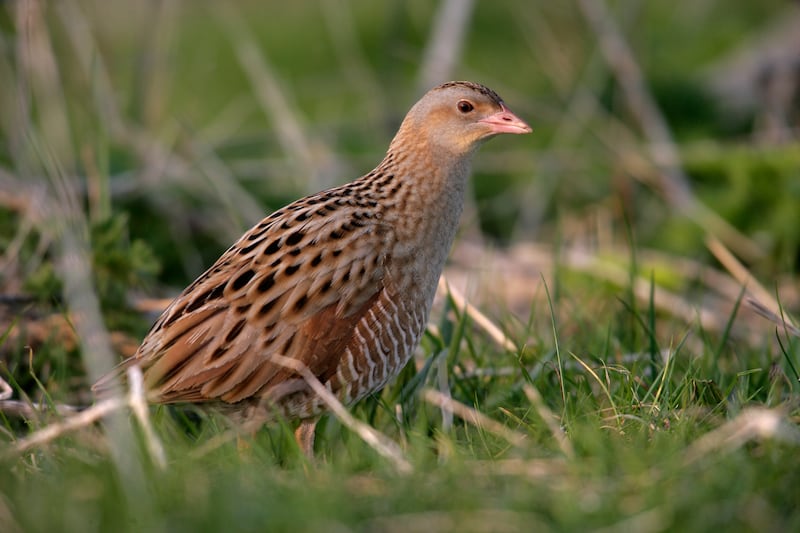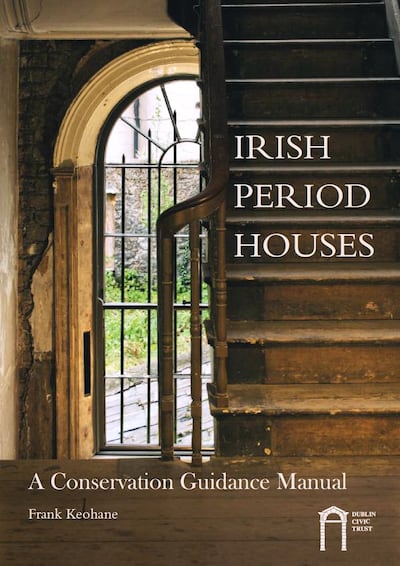It wasn’t a great big plan that brought me to Doolough in north Mayo but as it transpired it became a panacea for the past decade as I had moved house numerous times.
A few years ago, I was bidding on a property along the eastern coastline but as the bidding spiralled ever higher, I decided to leave. Not just the sale, but Dublin.
I set an alert on MyHome.ie for a house to rent for under €1,000 a month, near the sea, with a minimum of three beds, and the search came up trumps. It had been 30 years since I’d been in this part of the country and at that it had just been for an hour, so I knew not a sinner.
En route west, curiosity sparked my interest as to what was for sale in the area. I spotted Doolough Lodge, but waited a few months to place a bid to make sure I was buying a forever home and not just a glorious spot in the halcyon days of summer.
RM Block
I’m sure the move and subsequent purchase of a large farm screamed the wallop of a midlife crisis to many but lots of birds get blown off course and end up here. Quite happily, I might add.
[ The Doolough Diaries: Why my bathtub will have to go outside with the horsesOpens in new window ]
Having been commissioned to write on the birds of this region more than a decade ago, I had a fortuitous meeting with Dr Derek McLoughlin, now project manager of Wild Atlantic Nature, who explained the findings of his thesis on how important birds of this region are. A place with few hedgerows, fewer native trees, bent at the hip by the sheer force of gales.
One of the rarest creatures here is the corncrake, a shy little thing that looks a bit like a well-fed thrush wearing a rather long polo neck.

Remember it better though for its Latin name, Crex crex. Say it out loud; that’s the exact sound the creature continuously makes while standing in open fields at night and audible a kilometre away.
God love them. A species that fly the whole way from Burkina Faso for a bit of summer lovin’ in north Mayo, but unlike an avian version of Love Island, they risk death, as their call is like a foghorn to foxes and other predators.
Farmers are their biggest danger so, to give the poor sods a chance, they delay mowing and cut in circles. This initiative between the National Parks and Wildlife Service, Corncrake Life and local landowners has seen the numbers of corncrakes rise from only two birds when the project began in 1993 to 69 breeding pairs this year.
[ Top property: Our favourite houses of 2023Opens in new window ]
While corncrakes have flown south for winter warmth, one of the big issues I now face with the property here is making it warm and watertight. Advice from a local conservation consultant, was “let it breathe” and be vapour permeable. What I have learned is a retrofit is essentially a list of works to increase thermal performance. But methodology is what is important as old buildings are designed to breathe so understanding older technology is key. And, more importantly, new technology – currently the standard for SEAI grants – may not suit older houses like mine.
Three recommendations were made (by a former planner, an architect and conservation consultant) to purchase Frank Keohane’s book, Irish Period Houses: A Conservation Guidance Manual, so it’s on its journey from Dublin Civic Trust, costing €55 to get here.

A recent inspection of my house found that rooms with the greatest problems were the ones that had been “done up” a few decades ago.
The kitchen has dry rot. As a fungus, it needs 20 per cent moisture to live, so rather than treat it with chemicals I will need to address moisture content. For the past 30 years, these walls had insulation stuck on with boards closing any gap, so water rose and allowed the fungus to thrive.
In two rooms with concrete flooring, walls are so wet you’d need to change your clothes if you brushed against them. As moisture coming from under these floors (there’s just the earth under the joists below) now has nowhere to go due to the concrete flooring above and the fact the house has a concrete render externally, the only place moisture could go was up the walls. Hello rising damp.
To rectify this, I will need to take out sources of dampness, remove any repairs that were inappropriate and install limecrete so the building can breathe. And it has to be lime as pervious concrete is anathema to these old buildings.
I have been recommended underfloor heating as the steady constant temperature mimics how fires lit every morning kept even temperatures with no thermal spikes.
If there’s one thing I learned this week, it’s that retrofit methodology for old piles is completely different from that of newer builds. It also begs the question of what impact, if any, using newer-build retrofit technology on period homes will have. Quite a number of people are doing this if the property owners I’ve interviewed this year are anything to go by.
If you’d like to learn more, there’s a new coursebeing offered by the Heritage Council in partnership with Technological University of the Shannon for a certificate in energy renovation for traditional buildings, which teaches a methodology of “balancing energy-reduction strategies with heritage-conservation principles”.


















